Heneral Goyo Del Pilar

Biography
Gregorio was born in 1875 in the Philippines. He was the nephew of Marcelo H. del Pilar, who was a propagandist, and Toribio H. del Pilar, who had been exiled to Guam for participating in the 1872 Cavite Mutiny. The Cavite Mutiny was an unsuccessful mutiny at the Spanish arsenal Fort San Felipe. The participants hoped it would lead to a national uprising. In 1896, Gregorio turned 20 years old and received a Bachelor’s Degree from Ateneo de Manila University.
Nickname:
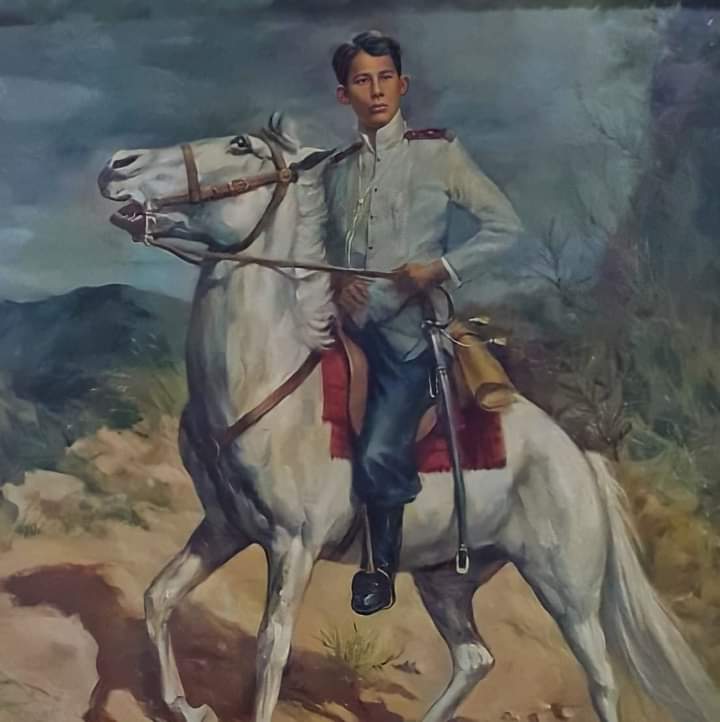
"Goyo, The Boy General"
Military service
Gregorio del Pilar was a military man so a key focus of any Gregorio del Pilar biography is the wars in which he fought. The wars included the Philippine Revolution and the Philippine American War.
Phillippine Revolution
The Philippine Revolution is also known as the Tagalog War. The war started in August 1896 with an unsuccessful attack on the capital city of Manila by the secret, secessionist organization named
The Revolution was fought between the Spanish colonial authorities and the Philippine people. Even though there was a truce, the Pact of Biak-na-Bato, hostilities never ceased between the rebels and Spain. The rebels, led by Emilio Aguinaldo, took over almost all the Spanish held ground and Aguinaldo declared Philippine independence in June of 1898
The First Philippine Republic was established and the Treaty of Paris was signed which ceded all Spanish territories in the Pacific to the United States, and soon after that, the Philippine American War began.
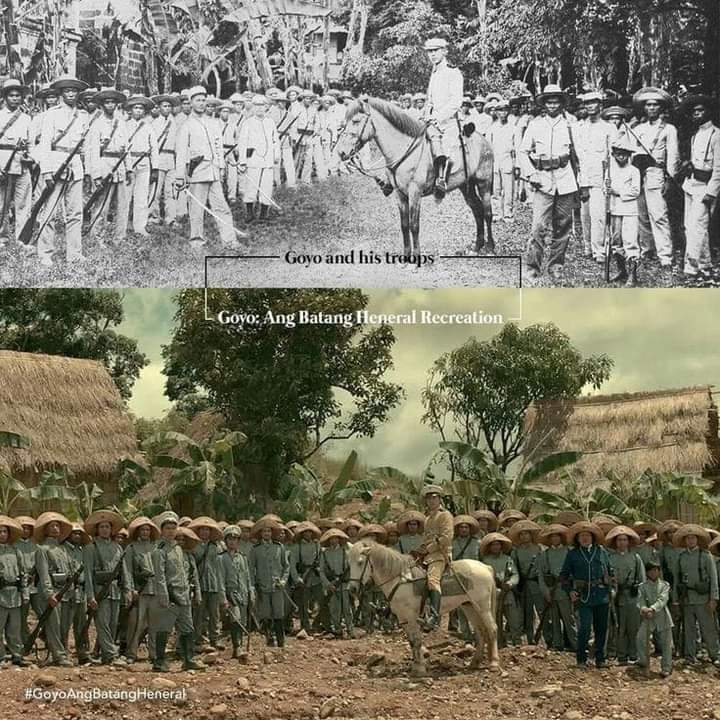
Battles
In 1896, the war began for Philippine independence from Spanish control. He joined the war efforts and distinguished himself as a field commander and was given the nickname “Boy General.” He was appointed leader of a section of the revolutionary forces in Nueva Ecija and Bulacan. He won against the Spanish forces in Bulacan and went on to assist the other troops who were battling at Manila. During the Philippine American War, he won a battle against Major Franklin Bell. He and his troops stopped a cavalry charge, killing Colonel M. Stotsenburg. On December 2, 1889, he and 60 other revolutionaries fought in the Battle of Tirad Pass. There, he was wounded with a bullet to his neck, and died.
His body lay unburied for several days until an American officer, Lt. Dennis P. Quinlan, found it. Del Pilar was given a military burial and his tombstone said, “An Officer and a Gentleman."
More facts:
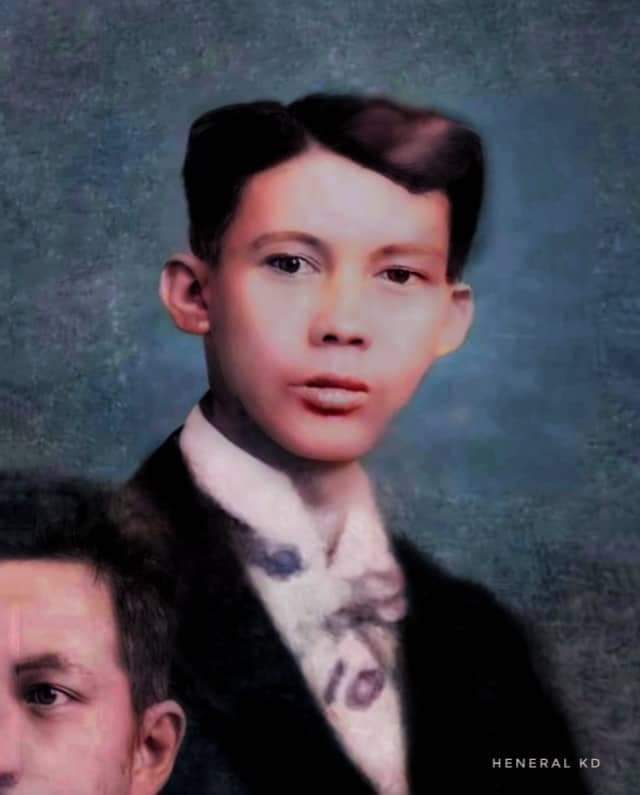
Papaano nga ba napasuko ni Goyo ang mga Kastila? Narito ang buod:
1. Hating-gabi nang Mayo 31, 1898, pagkatapos nilang magtipon sa kamalig ng bahay ni Don Ambrosio Delgado sa Sta Ana, ay nagkaroon ng biglaang paglusob ang hukbo ni Gregorio Del Pilar sa kabayanan ng Bulakan. Gamit ang 500 bagong baril na dala ni Goyo mula Hongkong, nagkaroon ng magdamagang palitan ng putok mula sa magkabilang panig. Kinubkob din nila ang daungan sa ilog ng Matungao kung saan may labindalawang prayle ang kanilang nadakip. May mga kasapi rin ng Milicia Filipina na kumalas ng suporta sa España at sumanib na sa rebolusyon. Sa Bagumbayan ang naging konsentrasyon ng puwersa ni Goyo. Nagsilikas ang mga taga-Bagumbayan patungong San Francisco. Nagsilikas rin ang mga taga-Poblacion patungo sa Tibig.
2. Kinabukasan, ika-1 ng Hunyo, tuluyang napaikutan ng mga rebolusyonaryo ang Simbahan ng Nuestra Señora De La Asuncion. Nakulong sa loob ng simbahan at kumbento ang mga Kastila at mga kaalyado nila. Gayunpaman, sa laki ng pagmamahal ni Goyo sa simbahan ay iniutos ni Goyo na hindi ito patamaan ng kanyon o ano mang makasisira sa simbahan. Ang namuno sa pagpapaikot sa simbahan ay si Julian Del Pilar, nakatatandang kapatid ni Goyo, kung kaya't hindi magawang makapuslit sa pagtakas ang mga Español.
3. Sa loob ng tatlong Linggo ay nakulong ang puwersa ng mga Kastila sa loob ng simbahan at kumbento. Hanggang sa maubusan na sila ng bala at pagkain. Nagdanas ang mga Kastila ng gutom, pagod at hirap. Ang mga nagtangkang tumakas ay hinuhuli at tinataboy pabalik ng simbahan. At habang naghihintay naman sa anumang hudyat ng pakikipag-usap, isang magarbong piging ang inihanda ng mga rebolusyonaryo sa Glorieta (tinatawag na Plaza Del Pilar ngayon). Tinakam ng mga taga-Bulakan ang mga kalabang nasa loob ng simbahan.
4. Hanggang sa dumating ang ika-23 ng Hunyo, isang puting watawat ang iwinagayway sa kampanaryo ng simbahan. Sumuko na ang pamahalaang Español sa Bulakan. Nagkaroon ng pag-uusap na sa kinabukasan ay magkakaroon ng pormal na paglalagda ng pagsuko.
5. Kinabukasan, ika-24 ng Hunyo, sinimulan ang mabunying araw na iyon ng pagmartsa mula sa Casa Real hanggang sa bahay ni Don Manuel Lazaro sa harap ng simbahan. Nagmula naman mula sa dakong Pitpitan si Goyo na sakay ng isang puting kabayo. Isang “arco triunfal” ay sadyang ipinatayo ng mga taga-San Nicolas sa may tulay ng Maysantol at San Jose. Sa pangunguna ng kanyang kababatang si Isidro Wenceslao, ang banda ng Bulakan ay tumugtog ng “Alerta Katipunan”.
6. Naganap ang lagdaan sa bahay ng mga Lazaro sa Poblacion. Ang kumatawan sa pamahalaang Español sa lagdaan ay ang huling Español na Gobernador Civil ng Bulacan na si Hen. Vicente Cuervo, kasama ang commandante ng hukbong Español sa Bulacan na si Ortiz. Sa panig naman ng mga rebolusyonaryo, ang lumagda ay sina Goyo at ang mga kababayang sina Francisco Morelos, Segundo Sempio, at Jose De Los Reyes. Kabilang sa mga isinuko ng Gobernador Civil ang mga gusaling pampamahalaan, kabilang na ang Casa Tribunal at ang Casa Real. Isinuko rin kay Goyo ang mahigit na isang daang ripleng Mauser. Pormal ring ibinaba ang Pambansang Watawat ng España sa saliw ng himig ng isang trumpeta. Kasunod nito ay ang pormal na pagtataas ng Pambansang Watawat ng Pilipinas, sa kauna-unahang pagkakataon sa Bulacan. Sumaludo ang mga Español kay Goyo bilang patunay na siya'y kinikilala nang bagong Gobernador ng Bulacan.
7. Ang awit na pumailanlang sa Poblacion ay ang paboritong awitin ni Goyo na “Sa Magandang Silangan”. Ang awiting ito ay mula sa isang tulang sinulat ni Jose Rizal noong 1891 na nilapatan naman ng himig ng Bulakenyong si Pedro Gatmaitan Santos na mula San Jose. Inawit ito ng tatlumpong mag-aaral ng Escuela Primaria ng Bulakan, kabilang ang pinsan ni Goyo at anak ni Plaridel na si Anita. Nagkaroon din ng mabunying putukan ng kuwitis at ibang paputok, at pagtugtog ng mga kampana.
8. Nakaranas ng matinding paghihirap ang mga prayle sa Bulakan. Sila'y pinagdamo sa paligid ng simbahan ng parokya at pinakain ng kakarampot na kanin at talangka. Tumagal ng ilang araw ang pang-aalipin sa mga kaparian hanggang sa makatanggap ng kautusang pangkalahatan si Goyo mula kay Aguinaldo tungkol sa makataong pagtrato sa mga bihag na Español. Ang mga sundalong Español nama'y kalunus-lunos rin ang naging kalagayan. Hindi sila binigyan ng makakain ng mga taga-Bulakan at halos mamalimos na sila sa iba't ibang bahay. Nagawa rin nilang magsilbi bilang mga muchacho o katulong sa mga mayayamang pamilya sa Poblacion, kapalit ng makakain at damit.
Sanggunian: Mga babasahing sinulat nina Ian Christopher Alfonso, Crisenciano Santiago at Mariano T. Santos. Colorized picture by Keann Davic Molina.
The last stand and Picture of General Gregorio del Pilar 🇵🇭
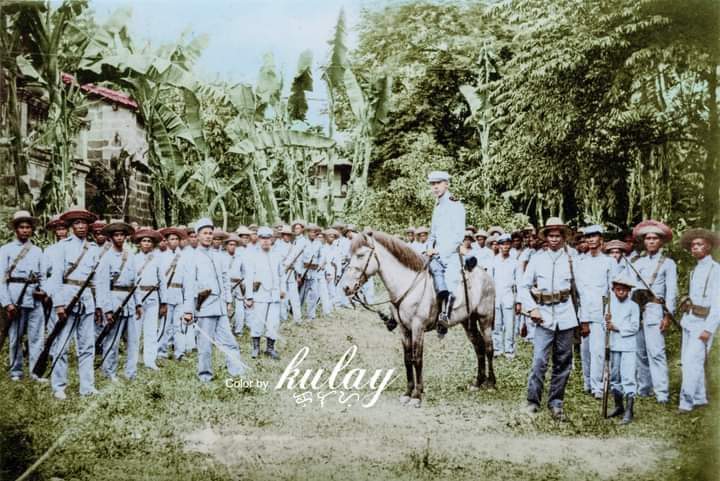
60 Filipinos vs. 500 Americans, and 24-year old Del Pilar achieved the mission given to him: block the Northern advance of the Americans long enough (5 hours) to spare the remnants of our valiant soldiers of independence.
That's certainly a strategic and moral victory, a legendary triumph which became the bukambibig or word of mouth of our ancestors so they all united behind Aguinaldo and the government that Del Pilar and his men defended at that pass.
That is why this event is known as the Philippine Thermopylae.
Ang aking Kuya! ❤
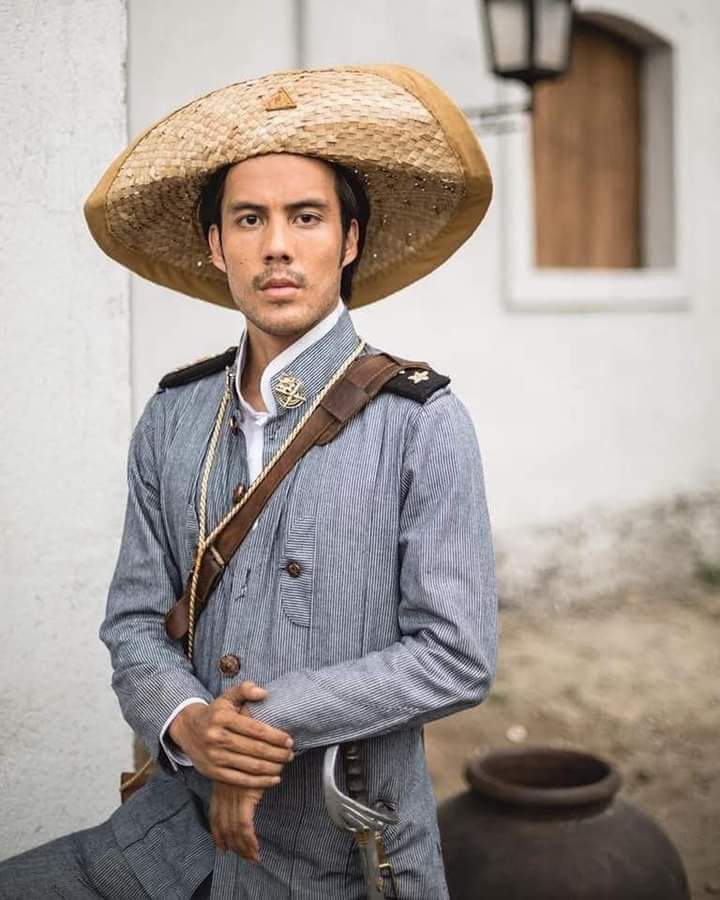
Col. Julian H. Del Pilar
Played in the movie "Goyo: Ang Batang Heneral" by Rafa Siguion Reyna. He was the supportive big brother of Goyo. After the revolution he became the Kapitan del Barrio of Brgy. Pitpitan, Bulakan, Bulacan.
He was buried at the Pitpitan Public Cemetery, Bulakan, Bulacan.
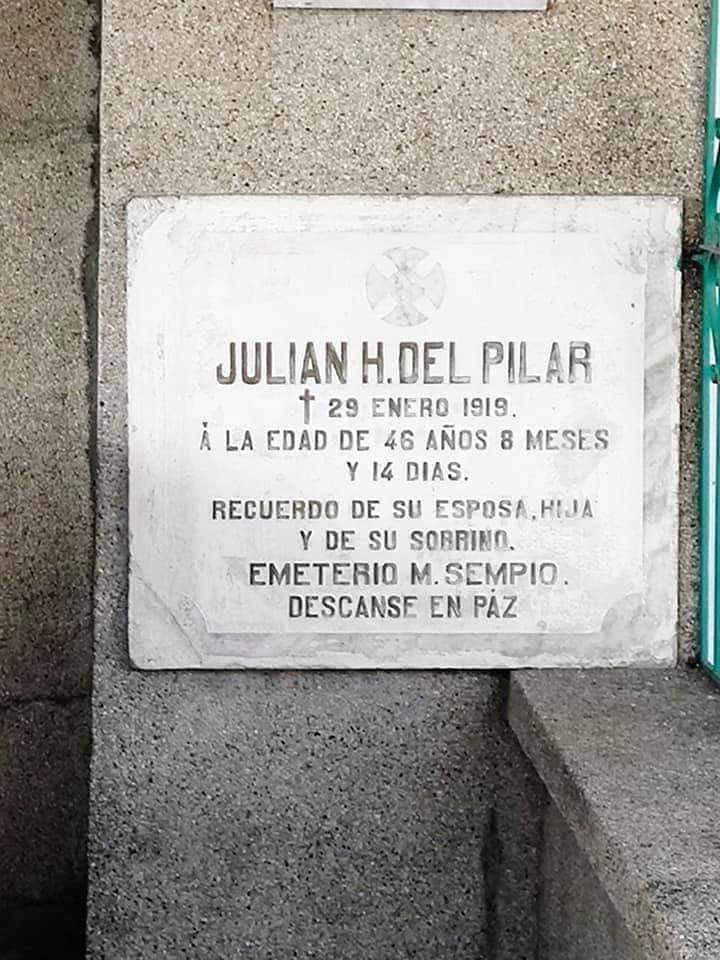
Colonel Vicente Enriquez
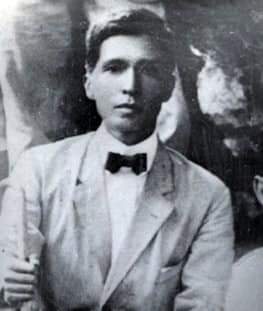
Colonel Vicente Enriquez. (December 16, 1879 - May 15, 1936) at Bulakan, Bulacan. Best known as Gregorio Del Pilar's Personal Assistant Aide de Camp, childhood friend, close friend and college chum. Anacleto Enriquez's younger brother; the third child out of nine. Son of Petrona and Vicente Enriquez Sr.
Emilio Aguinaldo y Famy

Emilio Aguinaldo y Famy QSC CCLH KGCR was a Filipino revolutionary, statesman, and military leader who is officially recognized as the first and the youngest president of the Philippines and the first president of a constitutional republic in Asia.
Marcelo Hilario del Pilar y Gatmaitán

Marcelo Hilario del Pilar y Gatmaitán, commonly known as Marcelo H. del Pilar and also known by his pen name Pláridel, was a Filipino writer, lawyer, journalist, and freemason. Del Pilar, along with José Rizal and Graciano López Jaena, became known as the leaders of the Reform Movement in Spain.
The area marked site where Heneral Gregorio Del Pilar Fell.
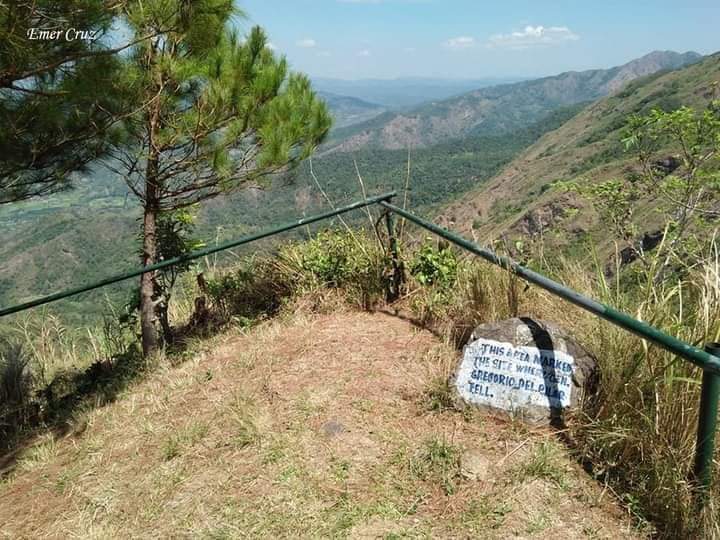
"I returned to the peak where I had left General del Pilar but midway up I saw him with Lietunants Eugenio [Telesforo] Carrasco and Vicente Morales and the bugler. I told him what I had seen. The general quickened his pace on learning that the Americans could be seen from a certain high point. We arrived at the upper trenches. Then we went to the hilltop where I was and the moment we got there we heard renewed firing and saw our soldiers giving battle. Our soldiers, pointing with their hands, warned del Pilar that the enemy was almost on top of us, but we could see nothing save an irregular movement in the cogongrass. So the general ordered a halt to the firing. And erect on the hilltop he tried to see and distinguish the enemy. While he was doing this he was hit by a bullet. The general covered his face with both hands, falling backward and dying instantly. He wore a new khaki uniform with his campaign insignia, his silver spurs, his polished shoulder straps, his silk handkerchiefs, his rings on his fingers. Always handsome and elegant!" — Colonel Vicente Enriquez
More trivia
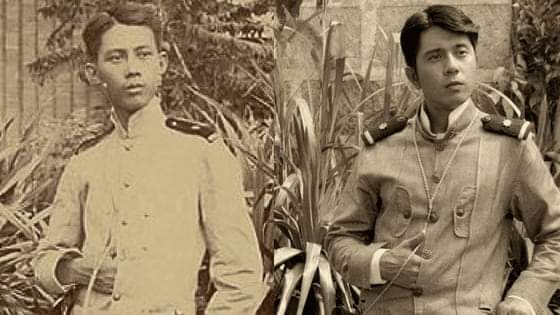
Si Gregorio del Pilar ay isa sa pinakabatang heneral na lumaban sa Digmaang Pilipino-Amerikano. Siya ay isinilang sa Bulacan, Bulakan noong Nobyembre 14, 1875 kina Fernando del Pilar at Felipa Sempio. Si del Pilar ay unang nag-aral kay Maestro de la san jose at pagkatapos ay nagpatuloy sa paaralan ng mananagalong na si Pedro Serrano Laktaw. Nag-aral siya sa Ateneo Municipal de Manila noong 1880 at tumira sa bahay ng kanyang tiyo na si Deodato Arellano kung saan sinasabing itinatag ang Katipunan. Sa murang isipan ni del Pilar natimo ang mapanganib na mensahero ng mga propagandista. Noong Marso 1896, nagtapos siya sa Ateneo sa kursong Bachiller en Artes, binalak niyang magturo subalit sumiklab ang apoy.
Sa murang gulang sumapi siya sa Katipunan. Naging pinuno ng mga katipunero at sumanib siya sa tropa ni Col. Vicente Enriquez kung saan napalaban siya at bunga ng maigting na pagtatanggol siya ay nahirang bilang tinyente sa gulang na 19. Ginawa siyang heneral ng isang brigada sa gulang na 22. Ang pagsalakay niya sa Paombong, Bulakan at Quingwa (ngayon ay Plaridel, Bulakan) ang nagpatanyag sa kanya. Napahanga niya si Aguinaldo at itinaas siya bilang tinyente kung saan pinalaya niya ang lalawigang ito. Nang mamatay si Hen. Antonio Luna si del Pilar ang humalili sa maliit na hukbo ni Aguinaldo. Nang tinugis sila ng mga Amerikano sa Pasong Tirad noong Disyembre 2, 1899, nagpaiwan siya upang abangan ang mga kaaway habang tumatakas si Aguinaldo.
MUSEO DEL PILAR 🇵🇭

Marcelo Hilario del Pilar advanced the goals of the Propaganda Movement to reform the colonial government, curb the powers and abuses of the Spanish friars, obtain equal rights between Spaniards and Filipinos, and provide Philippine representation in the Spanish Cortes. Del Pilar did this in two ways: through his writings (he became known by his pen name, Plaridel), and by organizing local communities against candidates of the friars. Plaridel’s eloquence in Tagalog, especially his satirical writings, and his organizational ability were so effective that Governor-General Ramon Blanco called him “the most dreadful of the Filipino politicians, the true voice of the separatists, very superior to Rizal.”
Plaridel was born on 30 August 1850 in Sitio Cupang, Barrio San Nicolas, Bulakan, Bulacan to Julian Hilario del Pilar and Blasa Gatmaitan. He finished law at the University of Santo Tomas in 1880. Through declamatory jousts like the dupluhan and dalitan during town fiestas, he would satirize corrupt officials and friars. In 1882, he established the nationalist newspaper Diariong Tagalog and wrote various anti-clerical pamphlets such as Cai-igat Cayo, Dasalan at Tuksohan, Kadakilaan ng Diyos, La Soberania Monacal, and La Frailocracia Filipinas.
In October 1888, del Pilar left for Spain to avoid arrest and imprisonment. In Barcelona, he joined other expatriate Filipinos such as Jose Rizal, Mariano Ponce, Graciano Lopez-Jaena, and the Luna Brothers, Juan and Antonio. They initiated the Reform Movement and convinced some Spanish legislators to support the changes they desired.
In November 1889, del Pilar succeeded Lopez-Jaena as the editor of the reformists’ bi-monthly paper, La Solidaridad, until its closure on 15 November 1895. Fatigue, hunger, and lack of proper clothing for the cold weather took a toll on his health. Plaridel died of tuberculosis on 4 July 1896..
Halina't pumunta sa Museo del Pilar para matuto at sariwain natin ang buhay ng aking tiyuhin na si Gat Marcelo H. del Pilar! ❤️🔥🇵🇭
NHCP Museo ni Marcelo H. del Pilar

Heneral Gregorio del Pilar PORTRAIT ART ✍️🇵🇭
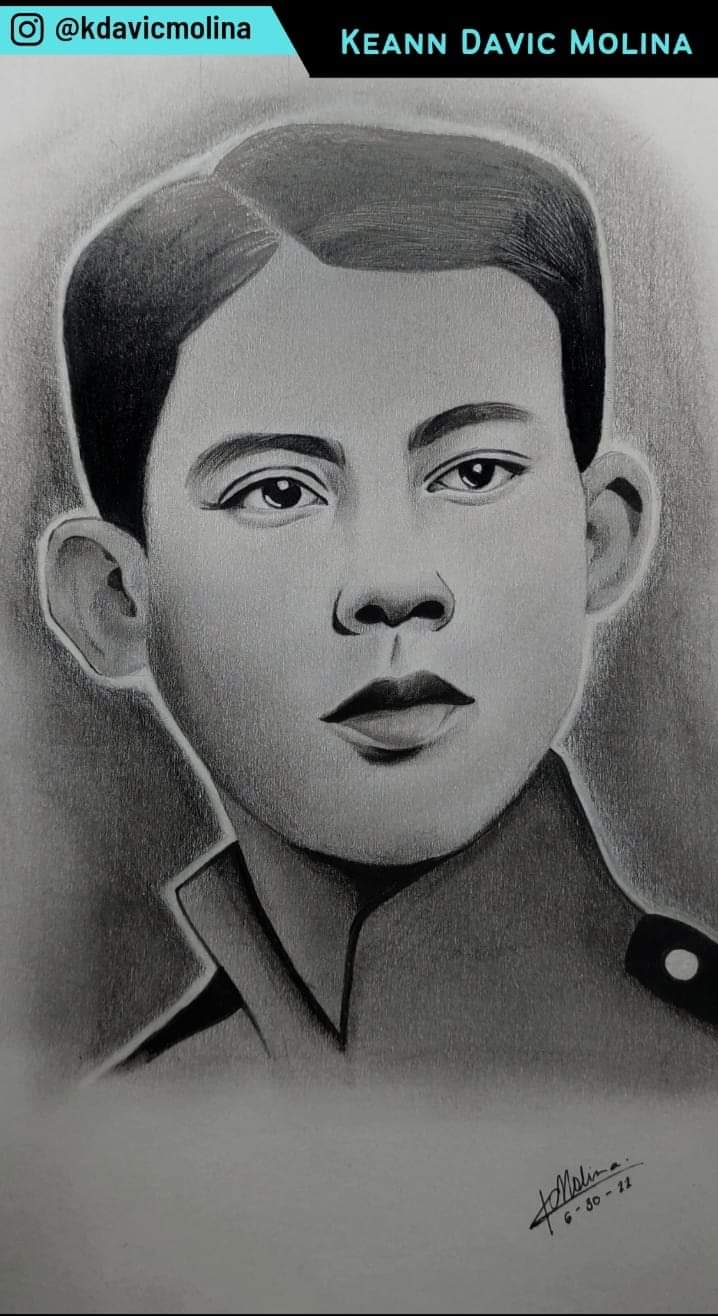
By Keann Davic Molina
- The first Provincial Governor of Bulacan at the age of 22
-- Became General at the age of 22
- Martyr of Tirad pass
- - Byron of Bulacan
Gregorio del Pilar was a man whose skill and strength can be compared to Alexander the Great and Edward the Black Prince. He was only in his early twenties when he took part in the revolution. General Goyo defeated spanish in a numbers of battles and was promoted many times because of this.
Estatwa ni Heneral Del pilar
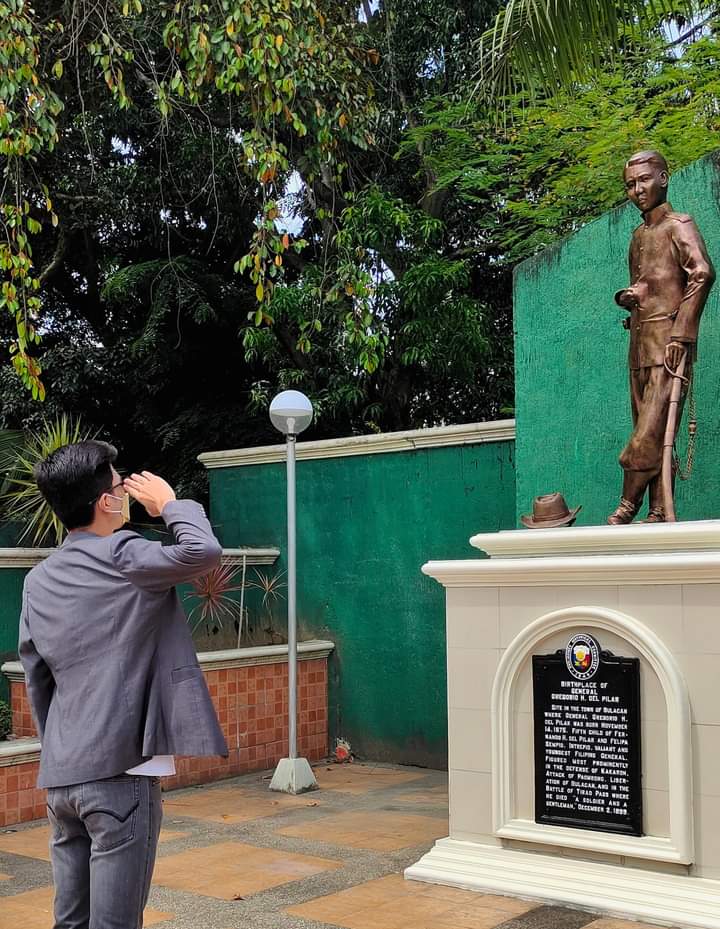
Makikita sa larawan na nakasaludo ang ating Admin "Modernong Goyo" sa estatwa ni Heneral Goyo sa Brgy. San Jose, Bulakan, Bulacan. bilang pag-aalay ng simpleng karangalan dahil sa pagkamit ng 100,000 followers sa ating pahina. - Admin Keann Davic Molina
Goyo, The Boy General

Sa kasaysayan ng bansang Pilipinas, Ang katapangan at kabayanihan ni Heneral Gregorio del Pilar ay hindi kailanman naging tsismis. At sana'y tularan siya ng mga kabataan ngayon. ❤🇵🇭
Viva Heneral del Pilar!